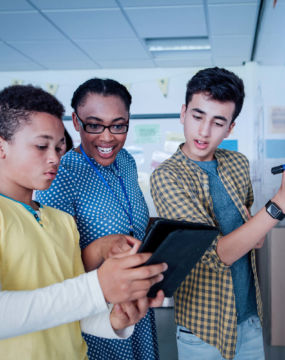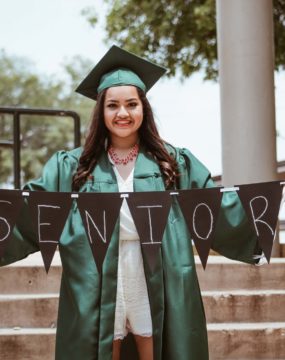What we deliver
We help people understand the population changes facing their communities
We help you understand what data you need, and where and how to access that data.
We use rigorous methods to translate the data and provide meaningful context.
We strengthen the capacity of your organization to communicate data-driven ideas.
Using datasets and primary research, we provide accessible and customizable insights in whatever format makes the most sense for your team. Learn more about our work and explore stories of how our clients use our tools and expertise to inform their decisions.

Background The Research Triangle Regional Partnership is an economic development organization that works with 12 core counties located in Central North Carolina. The organization serves as a connector between businesses looking to expand or relocate in the Triangle and the economic development offices, government agencies, and business organizations that can help fuel their growth. They approached Carolina Demography in 2020 with an ask: Could we build a databook for them to use in two ways: To source the material for their 2020 State of the Region event and publications To use for business planning by…

Appalachian GEAR UP wanted to provide each of the counties they serve with clear and usable information showing how their students were meeting college and career readiness benchmarks at key milestones between middle school and college. They also wanted each county to learn how their students were performing as compared to other students within their Prosperity Zone and the state of North Carolina. They asked Carolina Demography to determine which data sources were needed, perform an analysis on that data, and then create a series of one pagers for each county. We started by having…

In 2010, just over three of every four North Carolina households mailed back their census forms (76%), a seven percentage point increase in mail participation compared to 2000 (69%). Higher participation rates reduce the overall costs of conducting the census. And, when individuals self-respond, the data is more accurate. An inaccurate count paints a distorted picture of the make-up of our communities and will result in a misallocation of resources for North Carolina. To help North Carolina achieve a complete and accurate census count, Carolina Demography worked with the NC Counts Coalition to create a map that identifies communities across the state…

In 2018, the John M. Belk Endowment asked Carolina Demography to examine North Carolina students’ education outcomes at public, in-state schools and indicate gaps where interventions could be implemented to meet the state’s increasing need for a highly trained workforce. “We knew that less than half of working-age North Carolinians had earned a credential beyond a high school diploma,” says MC Belk Pilon, the president and board chair of the John M. Belk Endowment. “Still, much of the story remained unclear.” In collaboration with the John M. Belk Endowment, Carolina Demography mapped out a complete…

Background Wake Technical Community College (Wake Tech) serves the students of Wake County and surrounding areas. Leaders at Wake Tech wanted to better understand the rapid growth and migration patterns in the region that would help them plan for future recruitment and enrollment at Wake Tech. Approach We used data from a variety of sources – the U.S. Census Bureau's American Community Survey, U.S. Census Bureau population estimates, U.S. Census Bureau commuting data (LODES), student data from the NC Department of Public Instruction, NC Community College System (NCCCS) data, and custom-developed population projections from a…

Standard population measures don't necessarily account for populations that ebb and flow -- as they tend to do in resort and beach towns. We collected data from a variety of sources, looking at factors like emergency services usage, water demands, housing, local employment, and local expenditures and investments. We also interviewed people who worked in these locations. Our research made clear that you can’t look at the benefits of tourism without also accounting for the cost of infrastructure — and that it is a difficult dynamic to manage. The results were presented in both a…

A local business owner needed to convince a popular franchise’s parent organization that local residents in a rural NC county would frequent his shop. But he faced a challenge: On paper, the rural county is sparsely populated, with many household incomes falling well below the state’s median. Starting in November 2017, he began working with Carolina Demography to paint a more robust picture of the area. We began by looking at data from the U.S. Census Bureau and other sources, which indicated that the high-level snapshot of the county didn’t paint a complete picture.

The North Carolina Community College System (NCCCS) is a major provider of education and training to North Carolina workers and plays a critical role in helping North Carolina ensure sufficient levels of education and training to remain competitive in the changing economy. Despite the increasing demand for education, NCCCS has seen steadily declining enrollments since recovery from the Great Recession began in 2010. While population projections suggest that NCCCS may recover some of the recent enrollment declines, many individual community colleges face increased recruitment challenges due to demographic changes.

We are often asked to develop custom presentations for leaders across a variety of sectors who want to know how demographic shifts will affect their industry. We recently gave one such presentation to transportation leaders, who wanted to know how future demographic and industry trends might intersect. Background Based at the University of Memphis, the Southeast Transportation Workforce Center (SETWC) helps ensure that there are enough career-ready truck drivers in the Southeast region of the United States. The center identifies education and training gaps, develops partnerships across the transportation and freight sectors, and develops programs…

Background The SUDDEN research project at the UNC School of Medicine investigates all sudden unexpected deaths among adults ages 18-64 that occur outside of a hospital. Piloted in Wake County in 2013, the project seeks to understand risk factors for both cardiac and non-cardiac deaths. Ross J. Simpson, the lead SUDDEN PI and a cardiologist, wanted to expand his research study beyond Wake County. He approached Carolina Demography with a question: With limited budget and time, which counties in North Carolina, South Carolina, and Virginia should his team focus on in order to obtain a…

Last week, the U.S (United States). Census Bureau released 2023 county population estimates. These annual estimates tell us how county populations in North Carolina have changed over the course of a year: in this case, between July 1, 2022 and…

Deciding which educational pathway to pursue is often a daunting decision for a high schooler transitioning to postsecondary education. There are many questions a student must ask. Do I want to pursue a credential or a degree awarding program? What…

Dr. Michael Cline is the state demographer for North Carolina at the Office of State Budget and Management and has given us permission to re-post his content here. The original version of this piece is here. The foreign-born population in…
Your support is critical to our mission of measuring, understanding, and predicting population change and its impact. Donate to Carolina Demography today.